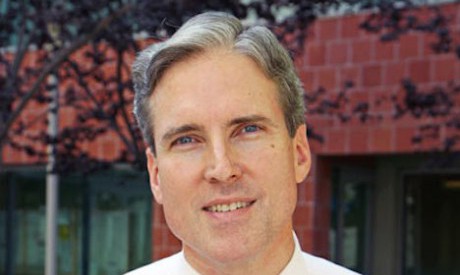After a typhoon chased us across the main island of Japan, my family and I found ourselves marching in the rain up a long hill in the middle of Nagasaki in search of the Urakami Cathedral.
With the approaching 69th anniversary of the atomic bombing here in 1945, we felt a sense of awe and apprehension as we made our way with a stream of pilgrims and tourists through the grand Peace Park near the hypocenter.
A sculpture trail, mostly donated by former Soviet-bloc countries, marks the path to a muscular 33-foot-tall peace statue at the center of the park.
But a small sign directs visitors to the sidewalk that departs from the north end, through a middle-class neighborhood, up the hill to the Catholic cathedral that bombardiers used to verify their positioning over the city that was for nearly 400 years the home of Japanese Christianity.
The previous day, we had visited the city of Kagoshima, farther to the south on the Japanese island of Kyushu.
It was there that St. Francis Xavier landed 465 years ago this week, in 1549, fashioning himself as an apostolic nuncio to the emperor of Japan.
He had studied with Ignatius of Loyola in Paris, and as one of the founding Jesuits, elected to leave his academic career for the life of a missionary.
The clan that welcomed St. Francis became suspicious of the colonizing ambitions of the Portuguese missionaries that followed him, and Christianity established a more secure foothold to the north in the more internationally facing port of Nagasaki.
The growth of Catholicism for 80 years was punctuated by resistance from local monks and the Shogun rulers.
In 1597, three Japanese Jesuits, a group of Franciscan missionaries, three boys and 14 Japanese men in the Third Order of St. Francis (of Assisi) were crucified on a hillside in Nagasaki.
The progressive persecution culminated in the Shimabara Rebellion by Christian peasants in 1637.
They were defeated the following year by a force of more than 120,000 warriors.
Christianity was outlawed and violently suppressed, and a period of national seclusion from European influence lasted nearly 250 years. Continue reading
Sources
- Patrick Whelan in National Catholic Reporter
- Image: Children’s Hospital Los Angeles
Dr. Patrick Whelan is a pediatric specialist in rheumatology at MassGeneral Hospital for Children and a lecturer in pediatrics at the University of Southern California and Harvard Medical School.
Additional readingNews category: Analysis and Comment.




